
How to Use MB102 Breadboard Power Supply Module 3.3V/5V: Examples, Pinouts, and Specs
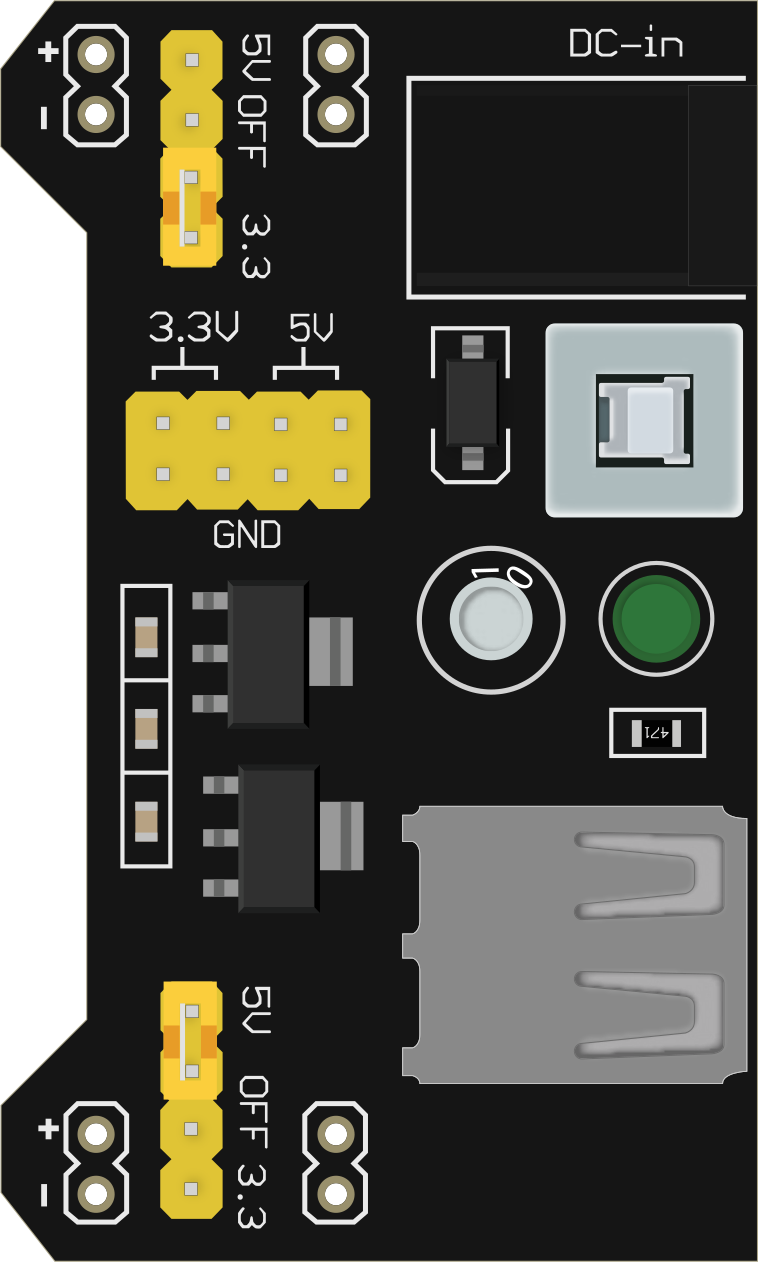
 Design with MB102 Breadboard Power Supply Module 3.3V/5V in Cirkit Designer
Design with MB102 Breadboard Power Supply Module 3.3V/5V in Cirkit DesignerIntroduction
The MB102 Breadboard Power Supply Module is a versatile and compact power solution designed by CorpCo for hobbyists, engineers, and students working on electronic projects and prototypes. This module is specifically created to fit standard solderless breadboards and provides both 3.3V and 5V regulated power outputs, which are commonly required voltages for digital and analog circuits. It is an essential tool for powering microcontrollers, sensors, and other electronic components during the prototyping phase.
Explore Projects Built with MB102 Breadboard Power Supply Module 3.3V/5V
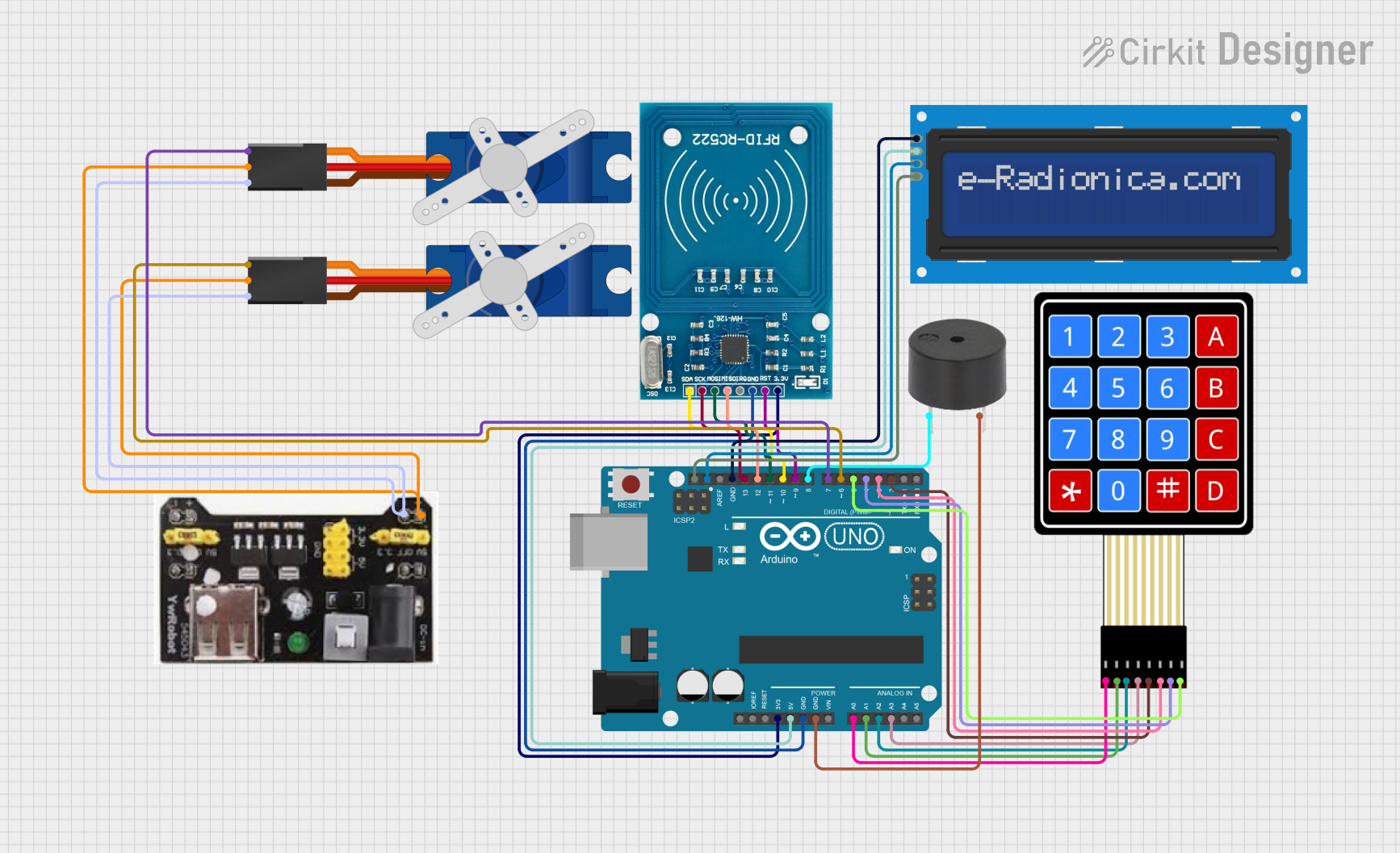
 Open Project in Cirkit Designer
Open Project in Cirkit Designer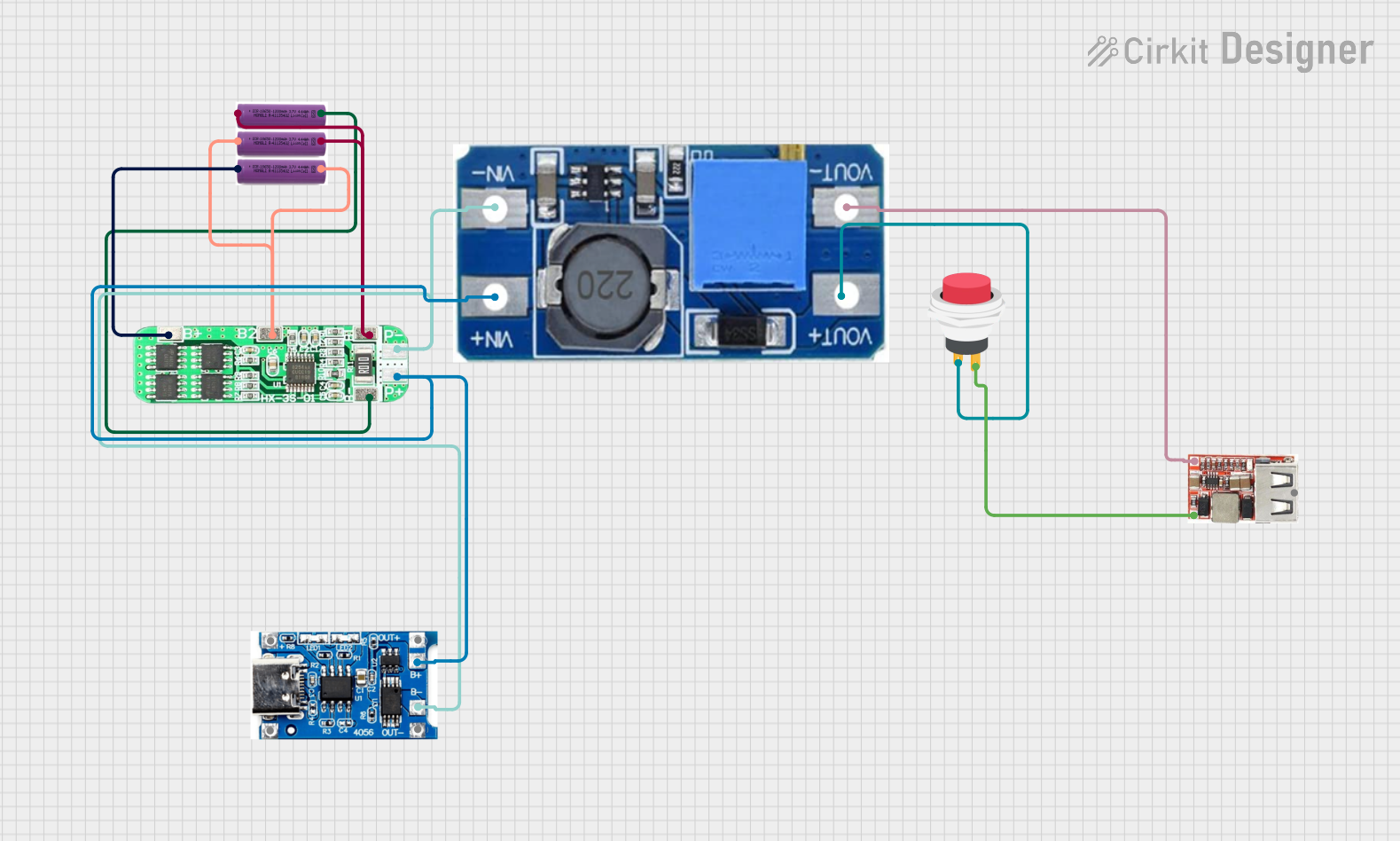
 Open Project in Cirkit Designer
Open Project in Cirkit Designer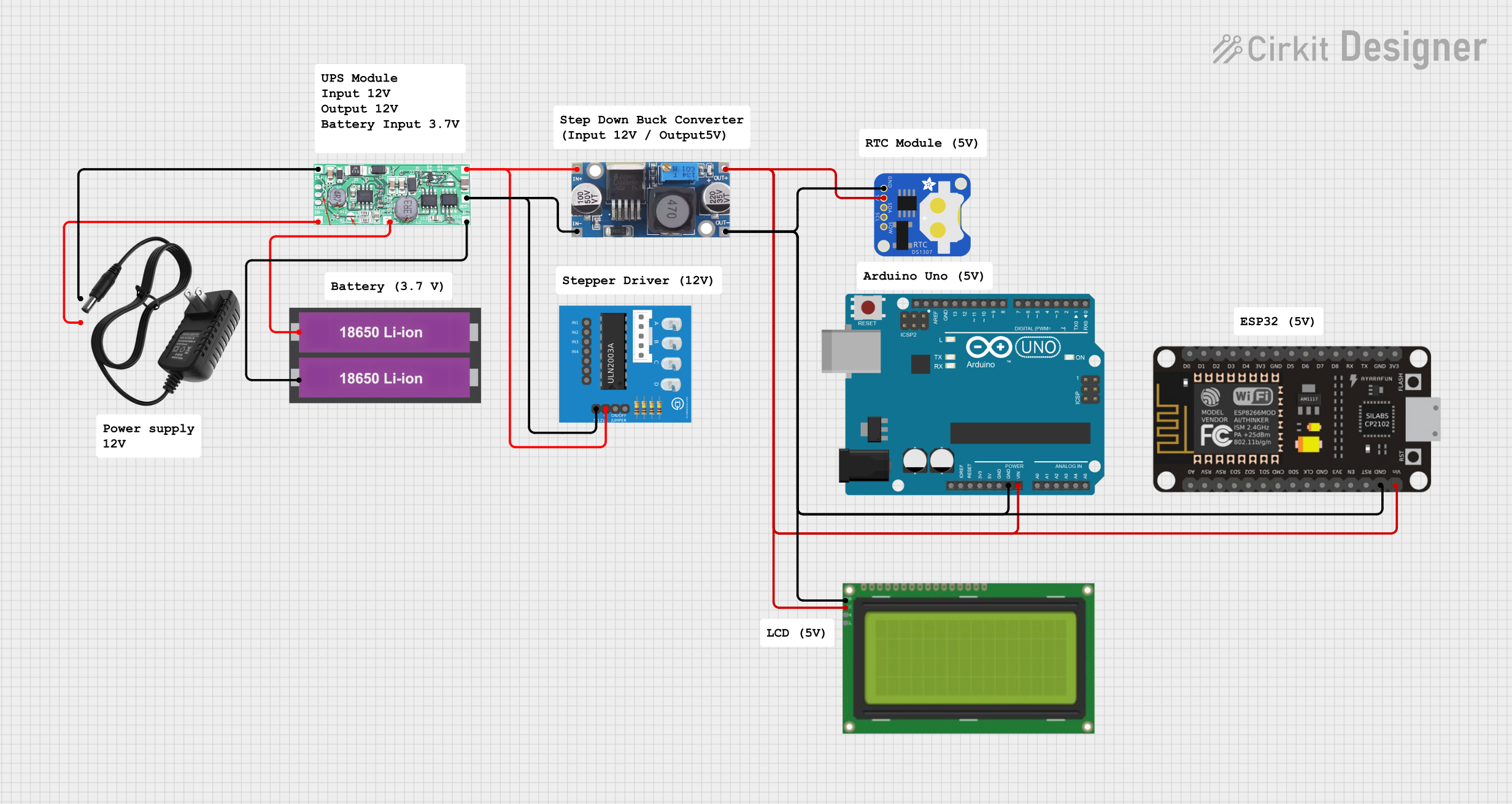
 Open Project in Cirkit Designer
Open Project in Cirkit Designer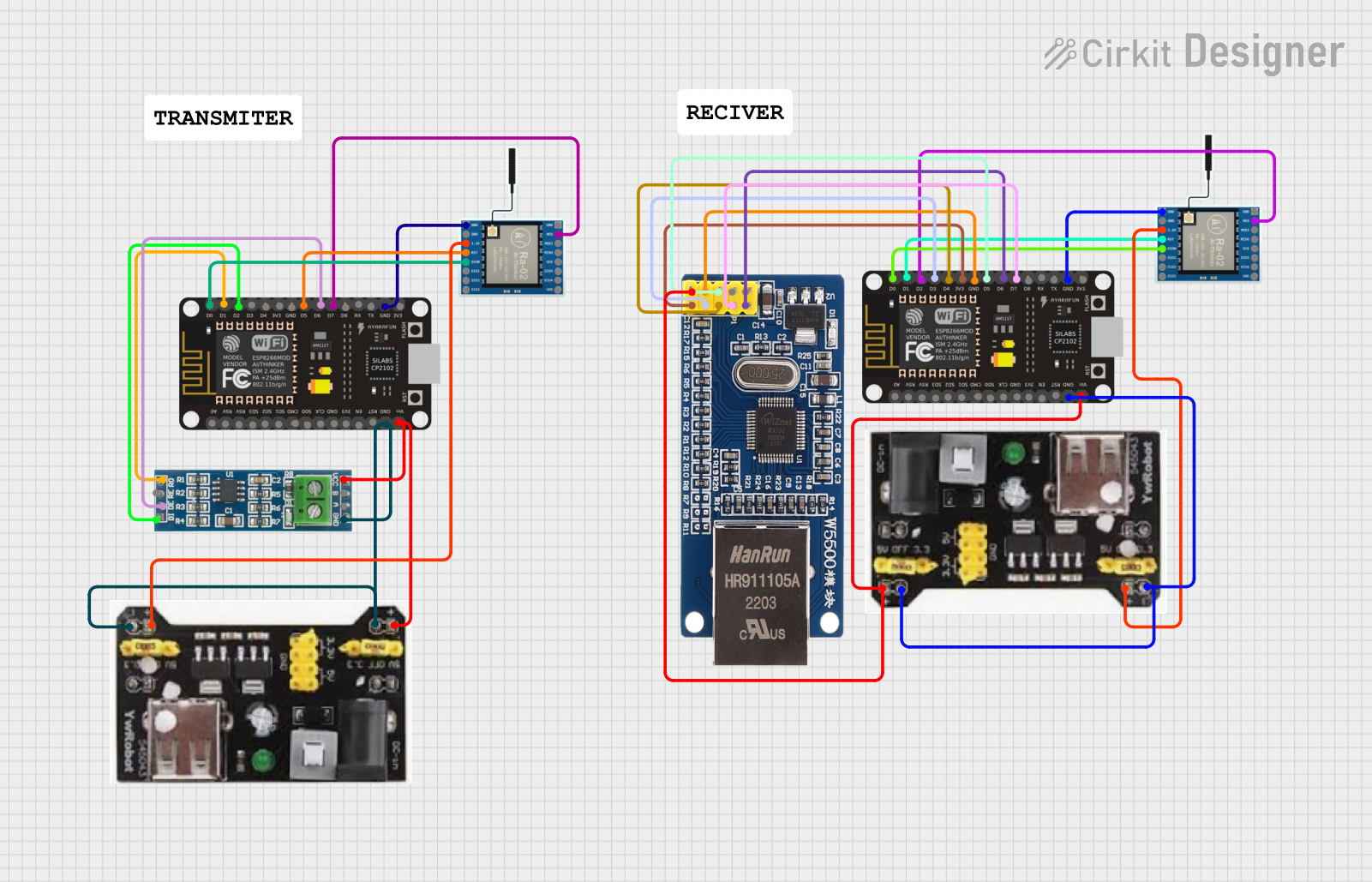
 Open Project in Cirkit Designer
Open Project in Cirkit DesignerExplore Projects Built with MB102 Breadboard Power Supply Module 3.3V/5V

 Open Project in Cirkit Designer
Open Project in Cirkit Designer
 Open Project in Cirkit Designer
Open Project in Cirkit Designer
 Open Project in Cirkit Designer
Open Project in Cirkit Designer
 Open Project in Cirkit Designer
Open Project in Cirkit DesignerCommon Applications and Use Cases
- Powering microcontroller platforms such as Arduino, Raspberry Pi, and PIC.
- Supplying power to LED displays, sensors, and other low-power electronic components.
- Use in educational settings for teaching electronics and circuit design.
- Rapid prototyping of digital and analog circuits.
Technical Specifications
Key Technical Details
- Input Voltage: 6.5V to 12V DC via barrel jack or USB power.
- Output Voltage: 3.3V and 5V DC regulated.
- Maximum Output Current:
- 700mA when powered via USB.
- 1A when powered via DC barrel jack.
- Onboard Voltage Regulator: Ensures stable output voltage.
- Power Rails: Dual independent power rails for each voltage.
- Switch Mode: Selectable 3.3V, 5V, or OFF via onboard switches.
Pin Configuration and Descriptions
| Pin Number | Description | Voltage Level |
|---|---|---|
| 1 | Ground (GND) | 0V |
| 2 | Output Voltage Select (VOUT) | 3.3V or 5V |
| 3 | Voltage Input (VIN) | 6.5V to 12V |
Usage Instructions
How to Use the Component in a Circuit
- Connect the MB102 module to the power rails of the breadboard.
- Set the desired output voltage using the onboard switches to either 3.3V or 5V.
- Connect the power and ground lines from the module to your circuit.
- Ensure that the input power source (USB or DC barrel jack) is within the specified range (6.5V to 12V).
- Verify that the total current draw of your circuit does not exceed the maximum output current of the module.
Important Considerations and Best Practices
- Always check the polarity of connections to prevent damage to the module and your components.
- Avoid exceeding the maximum input and output voltage and current ratings.
- When using both voltage outputs simultaneously, ensure the combined current does not surpass the maximum limit.
- Disconnect power before making or altering connections to prevent shorts and component damage.
Troubleshooting and FAQs
Common Issues Users Might Face
- Insufficient Voltage Output: Ensure that the input voltage is within the specified range and that the onboard switches are set correctly.
- Overheating: If the module is overheating, reduce the load or check for shorts in your circuit.
- Intermittent Power: Check all connections for looseness or damage.
Solutions and Tips for Troubleshooting
- Verify that the input power source is stable and within the required voltage range.
- Double-check the orientation of the power module on the breadboard.
- Inspect the breadboard and module for any signs of damage or wear.
FAQs
Q: Can I power the module using both USB and the barrel jack simultaneously?
A: No, you should only use one power input source at a time to prevent damage to the module.
Q: What is the maximum number of components I can power with this module?
A: This depends on the current draw of each component. Ensure the total current does not exceed 700mA when powered via USB and 1A when powered via the barrel jack.
Q: Is it possible to adjust the output voltage?
A: The output voltage is fixed and can be selected between 3.3V and 5V using the onboard switches.
Example Code for Arduino UNO
// Example code to demonstrate the use of the MB102 with an Arduino UNO
void setup() {
// Set up the built-in LED pin as an output.
pinMode(LED_BUILTIN, OUTPUT);
}
void loop() {
// Turn the LED on (HIGH is the voltage level)
digitalWrite(LED_BUILTIN, HIGH);
// Wait for a second
delay(1000);
// Turn the LED off by making the voltage LOW
digitalWrite(LED_BUILTIN, LOW);
// Wait for a second
delay(1000);
}
This example code will blink the built-in LED on the Arduino UNO, which is powered by the MB102 module set to 5V. Ensure that the Arduino UNO's ground is connected to the MB102's ground and the 5V pin to the 5V output on the MB102.